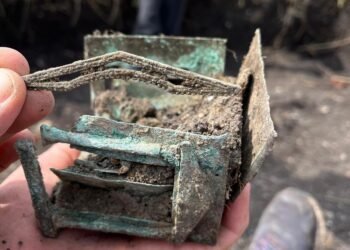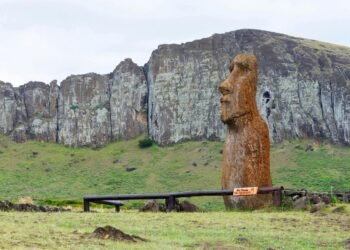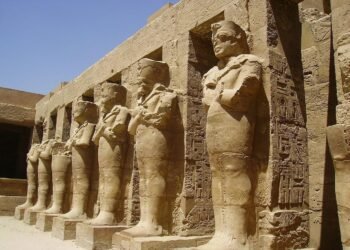A new study by Egyptologist Nicholas Brown of Yale University suggests that Tutankhamun was the first pharaoh to have taken part in an unusual funeral ritual known as the Awakening of Osiris which would ensure his resurrection in the afterlife. Brown’s study, published in The Journal of Egyptian Archaeology, presents compelling evidence for the association of Tutankhamun’s tomb artifacts with this rite

The study focuses on four wooden staffs and four clay trays discovered in the Boy King’s tomb. These items, initially thought to be simple stands, may be the oldest known archaeological record of the Awakening of Osiris ritual. This ancient practice, deeply rooted in Egyptian mythology, was performed to transform the dead king into Osiris, the god of the underworld, securing his life eternally after death.
The four staffs, according to Brown, resemble the hieroglyph “res” that appears in ancient Egyptian funerary writing, particularly in the “Books of the Underworld and Sky,” where the god Horus holds the same sign to bring to life a dead pharaoh. While these texts emerged a few decades later than Tutankhamun’s death, Brown suggests that the ritual may have originated with him.
In Egyptian mythology, Osiris was murdered by his brother Seth, dismembered, and then resurrected by his wife, Isis. Their son Horus later employed a sacred staff to reawaken Osiris. The four staffs in Tutankhamun’s tomb might be interpreted as symbols of this act, with the four clay troughs possibly serving to hold libations—ritual liquids associated with rejuvenation.

Brown notes that water from the Nile, used in libations, was even called the “Eye of Horus” and represented rebirth and the defeat of death. Trays, made of Nile mud, add a stronger connection to Osiris, who was associated with fertility and the life-giving attributes of the river.
Tutankhamun’s reign was a pivotal time in Egyptian history. His predecessor, Akhenaten, had tried to replace the Egyptian polytheistic religion with Aten, the sun god. When Tutankhamun was crowned, he and his officials tried to restore worship of Egypt’s traditional deities, like Osiris.

Brown argues that this spiritual restoration extended into the burial rites of the young pharaoh. “Tutankhamun’s restoration program not only entailed the reopening of temples and the reestablishment of traditional religious procedures but also revitalized interrupted beliefs about the afterlife,” he writes. The Awakening of Osiris ritual might have been a way of symbolically validating the legitimacy of the traditional pantheon, solidifying Tutankhamun’s status as a divine ruler. Supporting Brown’s theory, Egyptologist Salima Ikram previously speculated that Tutankhamun’s mummification was exceptionally unusual for a royal burial.
Regardless of which ritual was performed, the objects found in Tutankhamun’s tomb show a highly symbolic ceremony intended to ensure his resurrection. Brown believes that the layout of these objects within the tomb represents a physical enactment of the ritual.
























Comments 0